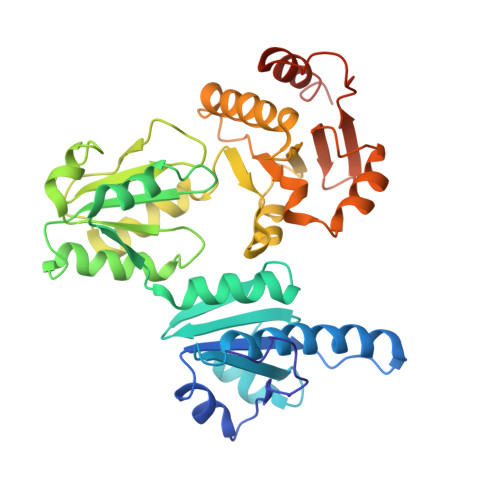Characterization of Two Human Skeletal Calsequestrin Mutants Implicated in Malignant Hyperthermia and Vacuolar Aggregate Myopathy.
Lewis, K.M., Ronish, L.A., Rios, E., Kang, C.(2015) J Biol Chem 290: 28665-28674
- PubMed: 26416891
- DOI: https://doi.org/10.1074/jbc.M115.686261
- Primary Citation of Related Structures:
5CRD, 5CRE, 5CRG, 5CRH - PubMed Abstract:
Calsequestrin 1 is the principal Ca(2+) storage protein of the sarcoplasmic reticulum of skeletal muscle. Its inheritable D244G mutation causes a myopathy with vacuolar aggregates, whereas its M87T "variant" is weakly associated with malignant hyperthermia. We characterized the consequences of these mutations with studies of the human proteins in vitro. Equilibrium dialysis and turbidity measurements showed that D244G and, to a lesser extent, M87T partially lose Ca(2+) binding exhibited by wild type calsequestrin 1 at high Ca(2+) concentrations. D244G aggregates abruptly and abnormally, a property that fully explains the protein inclusions that characterize its phenotype. D244G crystallized in low Ca(2+) concentrations lacks two Ca(2+) ions normally present in wild type that weakens the hydrophobic core of Domain II. D244G crystallized in high Ca(2+) concentrations regains its missing ions and Domain II order but shows a novel dimeric interaction. The M87T mutation causes a major shift of the α-helix bearing the mutated residue, significantly weakening the back-to-back interface essential for tetramerization. D244G exhibited the more severe structural and biophysical property changes, which matches the different pathophysiological impacts of these mutations.
Organizational Affiliation:
From the Department of Chemistry, Washington State University, Pullman, Washington 99164-4630.
















